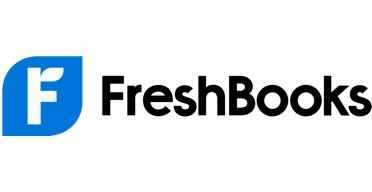How to Create a Budget for Your Small Business
Preparing a business budget can help you achieve your financial goals and prepare for seasonal shifts.
Many, or all, of the products featured on this page are from our advertising partners who compensate us when you take certain actions on our website or click to take an action on their website. However, this does not influence our evaluations. Our opinions are our own. Here is a list of our partners and here's how we make money.
Knowing how your business is performing at any given time can be key to your financial success. And that’s why creating a budget is so important.
A business budget projects future revenue and expenses so you can create a smart, realistic spending plan. As the year progresses, comparing your actual numbers against your budget can help you hold your business accountable and make sure it reaches its financial goals.
Here’s a step-by-step guide for creating a business budget, along with why budgets are crucial to running a successful business.
What is a business budget?
A business budget is a spending plan that estimates your future revenue and expenses, so that you can see whether you’re on track to meet financial expectations for the month, quarter or year. Think of your business budget as a point of comparison — you run your actual numbers against it to determine if you’re over or under budget.
From there, you can make informed business decisions and pivot accordingly. For example, maybe you find that your expenses are over budget for the quarter, so you may hold off on a large equipment purchase.
What does a business budget include?
The components of a budget will vary slightly based on the nature of your business. In general, however, a business budget will include:
- Projected revenue.
- Fixed costs, such as rent, business taxes, employee salaries and insurance premiums.
- Variable costs, such as raw materials, delivery costs and utilities.
- Projected profit.
- Contingency funds for unforeseen circumstances, like equipment failure.
Why is a business budget important?
Creating a business budget can help you do the following:
- Maximize efficiency.
- Establish a financial plan that helps your business reach its goals.
- Point out leftover funds that you can reinvest.
- Predict slow months and keep you out of debt.
- Estimate what it will take to become profitable.
- Provide a window into the future so you can prepare accordingly.
How to create a business budget in 6 steps
The longer you’ve been in business, the more data you’ll have to inform your forward-looking budget. If you’re a new business, however, you’ll want to do extensive research into typical startup costs for companies in your industry, so that you have working estimates for revenue and expenses.
From there, here’s how to put together your business budget:
1. Examine your revenue
First, you should look at your existing business and find all of your revenue sources. Add all those income sources together to determine how much money comes into your business monthly. It’s important to do these calculations for multiple months — and if you have enough data — for at least the last 12 months.
Notice how your business’s monthly income changes over time and try to look for seasonal patterns. Your business might experience a slump after the holidays, for example, or during the summer months. Understanding these seasonal changes will help you prepare for the leaner months and give you time to build a financial cushion.
Then, you can use those historic numbers and trends to make revenue projections for future months. Make sure to calculate for revenue, not profit. Your revenue is the money generated by sales before expenses are deducted. Profit is what remains after expenses are deducted.
» Learn more about basic accounting concepts
2. Subtract fixed costs
Next, you’ll want to add up all of your historic fixed costs and use them to reliably predict future ones. Fixed costs are those that stay the same no matter how much income your business is generating. They might occur daily, weekly, monthly or yearly, so make sure to get as much data as you can.
Examples of fixed costs within your business might include:
- Rent.
- Debt repayment.
- Employee salaries.
- Depreciation of assets.
- Property taxes.
Once you’ve identified your business’s fixed costs, you’ll subtract those from your income and move to the next step.
3. Subtract variable expenses
As you compile your fixed costs, you might notice other expenses that aren’t as consistent. Unlike fixed costs, variable expenses change alongside your business’s output or production. Look at how they’ve fluctuated over time, and use that information to estimate future variable costs. These expenses get subtracted from your income, too.
Some examples of variable expenses are:
- Hourly employee wages.
- Owner’s salary (if it fluctuates with profit).
- Raw materials.
- Utility costs that change depending on business activity.
During lean months, you’ll probably want to lower your business’s variable expenses. During profitable months when there’s extra income, however, you may increase your spending on variable expenses for the long-term benefit of your business.
4. Set aside a contingency fund for unexpected costs
During this process, you should make sure you put aside extra cash and plan for contingencies.
Although you might be tempted to spend surplus income on variable expenses, it’s smart to establish an emergency fund instead, if possible. That way, you’ll be ready when equipment breaks down and needs replacing, or if you have to quickly replace inventory that's damaged unexpectedly.
5. Determine your profit
Add up all of your projected revenue and expenses for each month. Then, subtract expenses from revenue. You may also see the resulting number referred to as net income. If you end up with a positive number, you can expect to make a profit.
If not, that’s a loss — and that can be OK, too. Small businesses aren’t necessarily profitable every month, let alone every year. This is especially true when your business is just starting out. Compare your projected profits to past profits to confirm whether they’re realistic.
6. Finalize your business budget
Are the resulting profits enough to work with, or is your business overspending? This is your opportunity to set spending and earning goals for each month, quarter and year. These goals should be realistic and achievable. If they don’t line up with your projections, make sure to establish a strategy for making up the difference.
As time goes on, regularly compare your actual numbers to your budget to determine whether your business is meeting those goals, and course correct if necessary.
Tools for preparing a business budget
Creating a business budget from scratch can feel tedious, but there are a variety of tools that can help simplify the process.
- Accounting software. Your small-business accounting software already houses your financial data, which can make it easier to create a budget. Plus, many software platforms offer basic budgeting reports.
- Business budgeting software. If you want more features than your accounting software offers, you might consider a dedicated business budgeting software. These platforms may offer cash flow forecasting or the ability to use different projection methods.
- Business budget templates. If you have simple financials — or don’t want to pay for another software — you can download free business budget templates to manually create and track your budget.
It can also be helpful to hire an accountant to help you manage your business budget, course-correct when things get off track and make sure your taxes are being paid correctly.
» Looking for tax-specific help? Learn how to find a business tax advisor
Article sources
NerdWallet writers are subject matter authorities who use primary,
trustworthy sources to inform their work, including peer-reviewed
studies, government websites, academic research and interviews with
industry experts. All content is fact-checked for accuracy, timeliness
and relevance. You can learn more about NerdWallet's high
standards for journalism by reading our
editorial guidelines.
Bonus offer
More like this
Related articles







